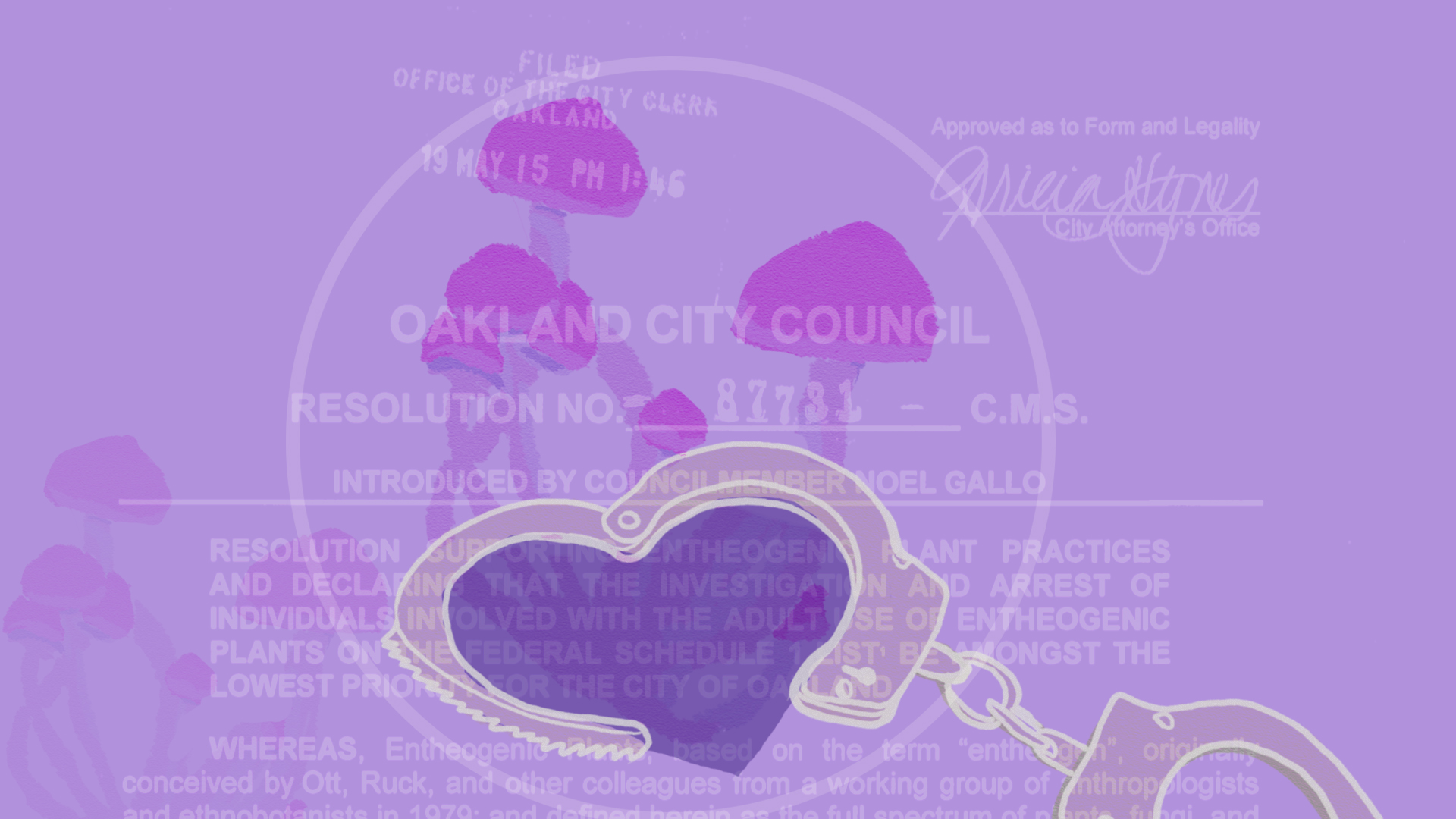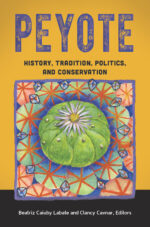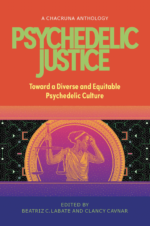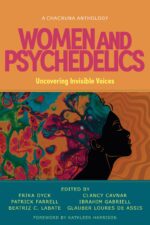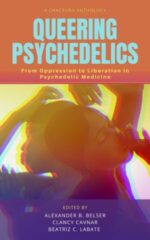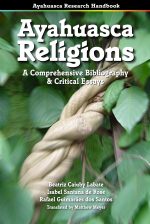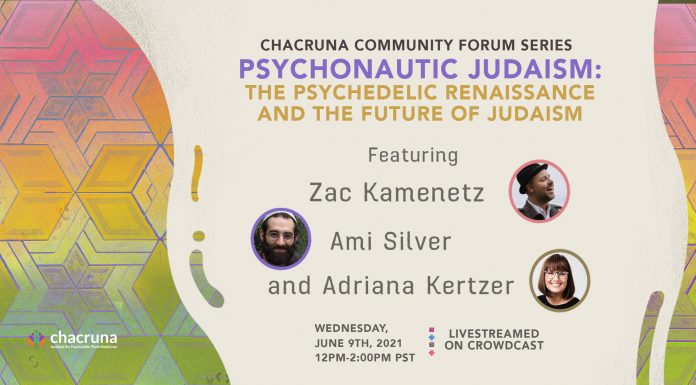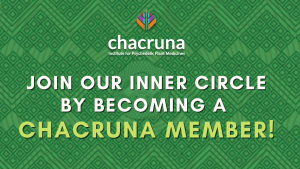- Meet Chacruna at Psychedelic Science 2025 - May 27, 2025
- Psychedelics and Attachment: Fundamentals, Implications, and New Frontiers - May 16, 2025
- Development Outreach Internship (OPEN) - May 6, 2025
OAKLAND CITY COUNCIL
RESOLUTION NO. 87731. – C.M.S.
INTRODUCED BY COUNCILMEMBER NOEL GALLO
RESOLUTION SUPPORTING ENTHEOGENIC PLANT PRACTICES AND DECLARING THAT THE INVESTIGATION AND ARREST OF INDIVIDUALS INVOLVED WITH THE ADULT USE OF ENTHEOGENIC PLANTS ON THE FEDERAL SCHEDULE 1 LIST1 BE AMONGST THE LOWEST PRIORITY FOR THE CITY OF OAKLAND
WHEREAS, Entheogenic Plants, based on the term “entheogen”, originally conceived by Ott, Ruck, and other colleagues from a working group of anthropologists and ethnobotanists in 1979; and defined herein as the full spectrum of plants, fungi, and natural materials deserving reverence and respect from the perspective of the individual and the collective, that can inspire personal and spiritual well-being’, can benefit psychological” and physical wellness”’, and can reestablish human’s inalienable and direct relationship to nature; and
WHEREAS, substance abuse’v, addiction, recidivism, trauma, post-traumatic stress symptoms, chronic depression, severe anxiety, end-of-life anxiety, grief, diabetes, cluster headaches, and other conditions are plaguing our community and that the use of Entheogenic Plants have been shown to be beneficial to the health and well-being of individuals and communities in addressing these afflictions via scientific and clinical studies and within continuing traditional practices, which can catalyze profound experiences of personal and spiritual growth; and
WHEREAS, practices with Entheogenic Plants have long existed and have been considered to be sacred to human cultures and human interrelationships with nature for thousands of years, and continue to be enhanced and improved to this day by religious and spiritual leaders, practicing professionals, mentors, and healers throughout the world, many of whom have been forced underground; and
WHEREAS, seeking to improve their health and well-being through the use of Entheogenic Plants use them in fear of arrest and prosecution; and
WHEREAS, the Entheogenic Plant practices of certain groups are already explicitly protected in the U.S. under the doctrine of religious freedom — the Native American Church’s use of peyote and the use of ayahuasca by two other churches, a Santo Daime congregation and the Uniao do Vegetal; and
WHEREAS, The United Nations considers Entheogenic Plant material used for ritual purposes as excluded from Schedule 1 substances; and
WHEREAS, Entheogenic plants containing ibogaine, for example, have been shown to alleviate treatment resistant cases of opiate and methamphetamine addiction at significantly higher rates than all other treatments for addictionxi. In addition, ibogaine is reported to be beneficial for addiction therapy related to specific work-related PTSD encountered by first responders such as EMT, police, and firefighters, as well as military veterans; and
WHEREAS, Entheogenic Plants or combinations of plants such as Ayahuasca that contain forms of DMT, a naturally occurring compound in the human body that is listed as a Schedule 1 substance, can lead to experiences that are reported as mystical or experientially similar to near death experiences and that are can be demonstrably beneficial in treating addiction, depression, PTS, and in catalyzing profound experiences of personal’ and spiritual growth; and
WHEREAS, Entheogenic cacti that contain phenethylamine compounds such as mescaline can be beneficial in healing drug and alcohol addictionT and for individual spiritual growth, and have been utilized in sacred initiation and community healing by diverse religious and cultural traditions for millennia and continuing use as religious sacraments in modern times; and
WHEREAS, psilocybin, naturally occurring in Entheogenic mushrooms, can alleviate end-of-life anxiety for hospice and terminal cancer patients, can reduce prison recidivism, and can effectively treat substance abuse—depression—cluster headaches; and
WHEREAS, a Johns Hopkins University study on “healthv-normals” found that psilocybin can occasion mystical-type experiences, which were considered one of the top five most meaningful experiences in a subject’s life for over 75% of their subjects within the first year after the study, and also found continuing positive life-style changes after a 14-month follow-up; and
WHEREAS, the City of Oakland wishes to declare its desire not to expend City resources in any investigation, detention, arrest, or prosecution arising out of alleged violations of state and federal law regarding the use of Entheogenic Plants; now, therefore, be it
RESOLVED: That the Mayor and City Council hereby declare that it shall be the policy of the City of Oakland that no department, agency, board, commission, officer or employee of the city, including without limitation, Oakland Police Department personnel, shall use any city funds or resources to assist in the enforcement of laws imposing criminal penalties for the use and possession of Entheogenic Plants by adults; and be it
FURTHER RESOLVED: That the Oakland City Council directs the City Administrator to instruct the City’s state and federal lobbyists to work in support of decriminalizing all Entheogenic Plants and plant-based compounds that are listed on the Federal Controlled Substances Schedule 1; and be it
FURTHER RESOLVED: That the Mayor and City Council hereby declare that it shall be the policy of the City of Oakland that the investigation and arrest of adult persons for planting, cultivating, purchasing, transporting, distributing, engaging in practices with, and/or possessing Entheogenic Plants or plant compounds on the Federal Schedule 1 list shall be.amongst the lowest law enforcement priority for the City of Oakland; and be it
FURTHER RESOLVED: That the Mayor and City Council call upon the Alameda County District Attorney to cease prosecution of persons involved in the use of Entheogenic Plants or plant-based compounds on the Federal Schedule 1 List; and be it
FURTHER RESOLVED: That if any provision of this resolution is declared by a court of competent jurisdiction to be contrary to any statute regulation or judicial decision or its applicability to any agency person or circumstances is held invalid the validity of the remainder of this resolution and it applicability to any other agency person or circumstance shall not be affected.
IN COUNCIL, OAKLAND, CALIFORNIA,
PASSED BY THE FOLLOWING VOTE:
AYES- FORTUNATO BAS, GALLO, GIBSON MCELHANEY, KALB, TAYLOR, THAO AND PRESIDENT KAPLAN —
NOES – 0
ABSENT – 0
ABSTENTION – 0
i Entheoqens for Personal and Spiritual Growth
Frecska, E., et al. (2012). Enhancement of Creative Expression and Entoptic Phenomena as After-Effects of Repeated Ayahuasca Ceremonies. Journal of Psychoactive Drugs 44(3), pp. 191-199.
Hartogsohn, I. (2018). The Meaning-Enhancing Properties of Psychedelics and Their Mediator Role in Psychedelic Therapy, Spirituality, and Creativity. Frontiers in Neuroscience, 12 (129). doi:10.3389/fnins.2018.00129
MacLean, K., et al. (2011). Mystical experiences occasioned by the hallucinogen psilocybin lead to increases in the personality domain of openness. Journal of Psychopharmacology, 25(11) 1453-1461.
Moro, L., etal. (2011) Voice of the Psychonauts: Coping, Life Purpose, and Spirituality in Psychedelic Drug Users. Journal of Psychoactive Drugs, 43 (3), pp. 188-198. DOI: 10.1080/02791072.2011.605661
Nour, M., et al. (2017): Psychedelics, Personality and Political Perspectives. Journal of Psychoactive Drugs. D0l:10.1080/02791072.2017.1312643
Sweat, N., et al. (2016). The Associations of Naturalistic Classic Psychedelic Use, Mystical Experience, and Creative Problem Solving. Journal of Psychoactive Drugs, 48 (5), pp. 344-350, DOI: 10.1080/02791072.2016.1234090
ii Entheogens and Psychological Wellness
Frecska E., et al., (2016). The Therapeutic Potentials of Ayahuasca: Possible Effects against Various Diseases of Civilization. Frontiers in Pharmacology, 7(35). doi:10.3389/fphar.2016.00035
McKenna, D. (2004). Clinical investigations of the therapeutic potential of ayahuasca: rationale and regulatory challenges. Pharmacology & Therapeutics 102(2), pp. 111-129.
dos Santos, R. et al. (2017). Effects of the Natural (3- Carboline Alkaloid Harmine, a Main Constituent of Ayahuasca, in Memory and in the Hippocampus: A Systematic Literature Review of Preclinical Studies. Journal of Psychoactive Drugs, 49(1), pp. 1-10, DOI: 10.1080/02791072.2016.1260189
Wilcox,J.(2014).PsilocybinandObsessive-GompulsiveDisorderrJot/ma/of————- Psychoactive Drugs, 46(5), pp. 393-395. DOI: 10.1080/02791072.2014.963754
iii Entheoqens and Physical Wellness
Djamshidian, A., et al. (2015). “Banisteriopsis caapi, a Forgotten Potential Therapy for Parkinson’s Disease?” Movement Disorders Clinical Practice: n/a-n/a.
Liu, X., et al., (2017) Harmine is an inflammatory inhibitor through the suppression of NF-kB signaling. Biochemical and Biophysical Research Communications, http://dx.doi.Org/10.1016/j.bbrc.2017.05.126
Ly et al. (2018). Psychedelics Promote Structural and Functional Neural Plasticity. Cell Reports 23, pp. 3170-3182.
McCleary, J., et al., (1960). Antibiotic activity of an extract of peyote (Lophophora 2749251 2 4
Williamii). Economic Botany, 14(3), pp. 247-249.
dos Santos, R. (2014) Immunological Effects of Ayahuasca in Humans. Journal of
Psychoactive Drugs, 46 (5), pp. 383-388.
Samoylenkoa, V., et al. (2010). Banisteriopsis caapi, a unique combination of MAO
inhibitory and antioxidative constituents for the activities relevant to neurodegenerative disorders and Parkinson’s disease. Journal of________ Ethnopharmacology, 127 (2), pp. 357-367. doi: 10.1016/j.jep.2009.10.030.
iv Entheoqens and Substance Abuse
Bogenschutz, M., et al. (2015). Psilocybin-assisted treatment for alcohol dependence: A proof-of-concept study. Journal of Psychopharmacology 29(3), pp. 289-299.
Bogenschutz, M., and Forcehimes, A. (2017). Development of a Psychotherapeutic Model for Psilocybin-Assisted Treatment of Alcoholism. Journal of Humanistic Psychology, 57(4), pp. 389-414.
Johnson, M. et al. (2017). An online survey of tobacco smoking cessation associated with naturalistic psychedelic use. Journal of Psychopharmacology 31 (7), pp. 841- 850.
de Veen, B. (2017) Psilocybin for treating substance use disorders? Expert Review of Neurotherapeutics, 17(2), pp. 203-212. DOI: 10.1080/14737175.2016.1220834
v Entheoqens and Recidivism
Romero, S. (March 28, 2015). In Brazil, some inmates get therapy with hallucinogenic tea. The New York Times.
vi Entheoqens and Anxiety
Sarris, J., et al. (2013). “Plant-based medicines for anxiety disorders, part 2: a review of clinical studies with supporting preclinical evidence.” CNS Drugs 27(4), pp. 301- 319.
vii Entheoqens and Grief
Gonzalez, D., et al. (2017). Potential Use of Ayahuasca in Grief Therapy. OMEGA— Journal of Death and Dying, pp. 1-26
viii Ayahuasca and Diabetes
Wang, P. et al., (2015). A high-throughput chemical screen reveals that harmine- mediated inhibition of DYRK1A increases human pancreatic beta cell replication. Nature Medicine 21, pp. 383-388.
ix Entheoqens and Cluster Headaches
Schindler, E., et al. (2015) Indoleamine Hallucinogens in Cluster Headache: Results of the Clusterbusters Medication Use Survey, Journal of Psychoactive Drugs, 47:5 372-381, DOI: 10.1080/02791072.2015.1107664
x Historical Use of Entheogens
El-Seedi, H., et al. (2005). Prehistoric peyote use: Alkaloid analysis and radiocarbon dating of archaeological specimens of Lophophora from Texas. Journal of Ethnopharmacology 101(1), pp. 238-242.
Guzman, G. (2008). Hallucinogenic Mushrooms in Mexico: An Overview. Economic Botany, 62(3), pp. 404-412.
Miller, L. et al., (2019). Chemical evidence for the use of multiple psychotropic plants in a 1,000-year-old ritual bundle from South America. Proceedings of the National AcademyofSciences. DOI:10.1073/pnas.190217411
Samorini, G. (1992). The Oldest Representations Of Hallucinogenic Mushrooms In The World (Sahara Desert, 9000 – 7000 B.P.). Integration, Journal of Mind-moving Plants and Culture 2/3.
xi Iboga/lboqaine for Addiction Therapy
Alper, K., et al. (1999). Treatment of acute opioid withdrawal with ibogaine. American Journal of Addictions, 8(3), 234-242. doi:10.1080/105504999305848
Brown, T. K. (2013). Ibogaine in the treatment of substance dependence. Current Drug Abuse Reviews, 6(1), 3-16. doi: 10.2174/15672050113109990001
Brown, T. and Alper, K. (2017): Treatment of opioid use disorder with ibogaine: detoxification and drug use outcomes. The American Journal of Drug and Alcohol Abuse. DOI: 10.1080/00952990.2017.1320802
Luciano, D. (1998). Observations on treatment with ibogaine. American Journal of Addictions, 7(1), pp. 89-89. doi:10.1111/j.1521-0391.1998.tb00472.x
Mash, D., et al. (2001). Ibogaine in the treatment of heroin withdrawal. In K. Alper, & G. A.
171). London: Academic Press/Elsevier.
Mash, D., et al., (2018) Ibogaine Detoxification Transitions Opioid and Cocaine Abusers
Between Dependence and Abstinence: Clinical Observations and Treatment Outcomes. Frontiers in Pharmacology. 9:529. doi: 10.3389/fphar.2018.00529
Sheppard, S. G. (1994). A preliminary investigation of ibogaine: Case reports and recommendations for further study. Journal of Substance Abuse Treatment, 11(4), 379-385. doi:10.1016/0740-5472(94)90049-3
xii Avahuasca Experience similar to Near-Death Experience
Liester, M. B. (2013). Near-death experiences and ayahuasca-induced experiences- two unique pathways to a phenomenologically similar state of consciousness. Journal of Transpersonal Psychology 45(1), p. 24.
xiii Avahuasca for Addiction Therapy
Barbosa, P. et al. (2018) Assessment of Alcohol and Tobacco Use Disorders Among Religious Users of Ayahuasca. Frontiers in Psychiatry, 9 doi:10.3389/fpsyt.2018.00136
Brierley, D., and Davidson, C. (2012). Developments in harmine pharmacology – Implications for ayahuasca use and drug-dependence treatment. Progress in Neuro-psychopharmacology & Biology 39(2), pp. 263-272.
Liester, M. and Prickett, J. (2012) Hypotheses Regarding the Mechanisms of Ayahuasca in the Treatment of Addictions. Journal of Psychoactive Drugs, 44 (3), pp. 200-208. DOI: 10.1080/02791072.2012.704590
Loizaga-Velder, A. and R. Verres (2014). Therapeutic effects of ritual ayahuasca use in the treatment of substance dependence-qualitative results. Journal of Psychoactive Drugs 46(1), pp. 63-72.
Mabit, J., et al. (1996). Takiwasi: The Use of Amazonian Shamanism to Rehabilitate Drug Addicts. Yearbook of Cross-Cultural Medicine and Psychotherapy. W. Andritzky. Berlin, International Institute of Cross-Cultural Therapy Research. Talina, P., and Sanabriab, E. (2017). Ayahuasca’s entwined efficacy: An ethnographic study of ritual healing from addiction. International Journal of Drug Policy 44, pp. 23-30.
Thomas, G., et al. (2013). Ayahuasca-assisted therapy for addiction: results from a preliminary observational study in Canada. Current Drug Abuse Review 6(1), pp. 30-42.
xiv Avahuasca and Depression
Anderson, B. (2012). Ayahuasca as Antidepressant? Psychedelics and Styles of Reasoning in Psychiatry. Anthropology of Consciousness, 23 (1), pp. 44-59.
de L. Osorio, F., et al. (2015). Antidepressant effects of a single dose of ayahuasca in patients with recurrent depression: a preliminary report. Revista Brasileira de Psiquiatria 37(1), pp. 12-20.
Palhano-Fontes, F., et al. (2014). The Therapeutic Potentials of Ayahuasca in the Treatment of Depression. The Therapeutic Use ofAyahuasca. B. C. Labate and C. Cavnar, Springer: Berlin, Heidelberg, pp. 23-39.
dos Santos, R., et al. (2016). Anti-depressive, anxiolytic, and anti-addictive effects of ayahuasca, psilocybin and lysergic acid diethylamide (LSD): A systematic review of clinical trials published in the last 25 years. Therapeutic Advances in Psychopharmacology, 6(3), pp. 193-213. doi:10.1177/2045125316638008
xv Avahuasca and PTSD
Nielson, J. and Megler, J. (2014). Ayahuasca as a Candidate Therapy for PTSD. The
Therapeutic Use ofAyahuasca. B. C. Labate and C. Cavnar, Springer: Berlin, 2749251 2 7 Heidelberg, pp. 41-58.
xvi Avahuasca and Personal Growth
Bouso, J. C., et al. (2012). “Personality, Psychopathology, Life Attitudes and Neuropsychological Performance among Ritual Users of Ayahuasca: A Longitudinal Study. PLoS ONE 7(8).
Kuypers, K., et al. (2016). Ayahuasca enhances creative divergent thinking while decreasing conventional convergent thinking. Psychopharmacology. DOI 10.1007/S00213-016-4377-8
Soler J., etal. (2018). Four Weekly Ayahuasca Sessions Lead to Increases in “Acceptance” Capacities: A Comparison Study With a Standard 8-Week Mindfulness Training Program. Frontiers in Pharmacology, 9 (224). doi: 10.3389/fphar.2018.00224
xvii Avahuasca and Spiritual Growth
Harris, R., and Gurel, L. (2012). A Study of Ayahuasca Use in North America. Journal of Psychoactive Drugs 44(3): 209-215.
Trichter, S., et al. (2009). Changes in spirituality among ayahuasca ceremony novice participants. Journal of Psychoactive Drugs 41(2), pp. 121-134.
Tupper, K. (2010). Entheogenic healing: The spiritual effects and therapeutic potential of ceremonial ayahuasca use. The healing power of spirituality: How faith helps humans thrive, Volume 3. J. H. Ellens. Santa Barbara, Praeger: pp. 269-282.
Tupper, K. W. (2002). Entheogens and Existential Intelligence: The Use of Plant Teachers as Cognitive Tools. Canadian Journal of Education 27(4), pp. 499-516.
xviii Peyote for treatment of alcohol and drug dependence
Winkelman, M. (2014). Psychedelics as Medicines for Substance Abuse Rehabilitation: Evaluating Treatments with LSD, Peyote, Ibogaine and Ayahuasca. Current Drug Abuse Reviews 7, pp. 101-116. xix
xix Peyote
Calabrese, J. (2007). The Therapeutic Use of Peyote in the Native American Church Chapter 3 in Vol. 1 of Psychedelic Medicine: New Evidence for Hallucinogens as Treatments. Michael J. Winkelman and Thomas B. Roberts (editors). Westport, CT: Praeger/Greenwood.
Feeney, K. (2007). The Legal Basis for Religious Peyote Use. Chapter 13 in Vol 1 ofPsychedelic Medicine: New Evidence for Hallucinogens as Treatments. Michael J. Winkelman and Thomas B. Roberts (editors). Westport, CT: Praeger/Greenwood.
xx Psilocybin for End-of-Life Anxiety
Blinderman, C. (2016). Psycho-existential distress in cancer patients: A return to entheogens. Journal of Psychopharmacology 30 (12), pp. 1205-1206.
Kelmendi, B., et al. (2016). The role of psychedelics in palliative care reconsidered: A case for psilocybin. Journal of Psychopharmacology 30(12). pp. 1212-1214.
Ross, S., et al. (2016). Rapid and sustained symptom reduction following psilocybin treatment for anxiety and depression in patients with life-threatening cancer: a randomized controlled trial. Journal of Psychopharmacology, 30(12), pp. 1165- 1180.
xxi Entheogens and Reduced Recidivism
Hendricks, P., et al. (2014). Hallucinogen use predicts reduced recidivism among substance-involved offenders under community corrections supervision. Journal of Psychopharmacology 28(1), pp. 62-66.
Walsh, Z. , et al. (2016). Hallucinogen use and intimate partner violence: Prospective evidence consistent with protective effects among men with histories of problematic substance use. Journal of Psychopharmacology, pp. 1-7. DOI: 10.1177/0269881116642538.
xxii Psilocybin and Treatment-Resistant Depression
Hendricks, P., et al. (2015). Psilocybin, psychological distress, and suicidality. Journal of Psychopharmacology, 29(9), pp. 1041-1043.
Lyons, T. and Carhart-Harris, R. (2018). Increased nature relatedness and decreased authoritarian political views after psilocybin for treatment-resistant depression. Journal of Psychopharmacology, 32(7), pp. 811-819.
xxiii Psilocybin and Cluster Headaches
Schindler, E. et al., (2015) Indoleamine Hallucinogens in Cluster Headache: Results of pp. 372-381. DOI:10.1080/02791072.2015.1107664
Art by Mariom Luna.
Take a minute to browse our stock:
Did you enjoy reading this article?
Please support Chacruna's work by donating to us. We are an independent organization and we offer free education and advocacy for psychedelic plant medicines. We are a team of dedicated volunteers!
Can you help Chacruna advance cultural understanding around these substances?


